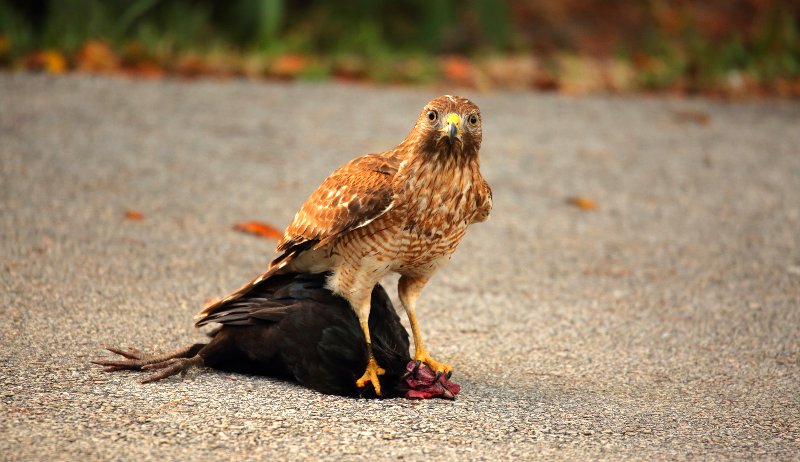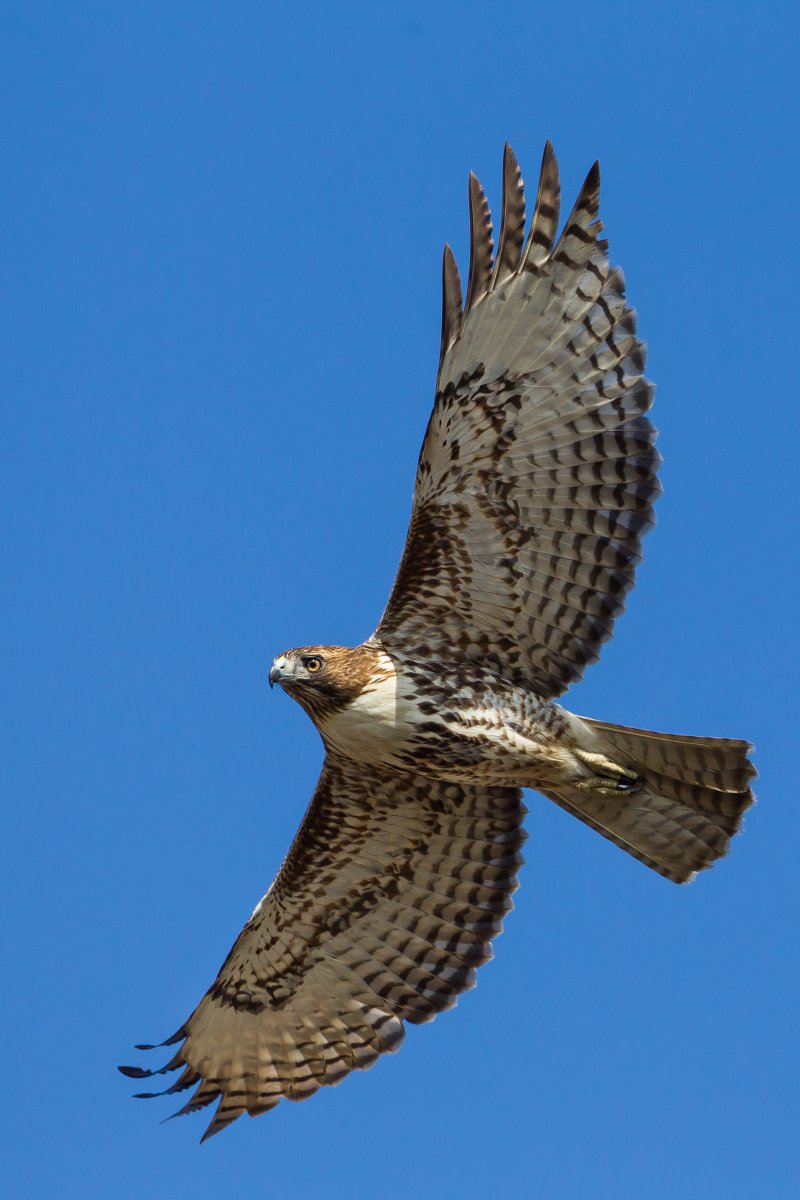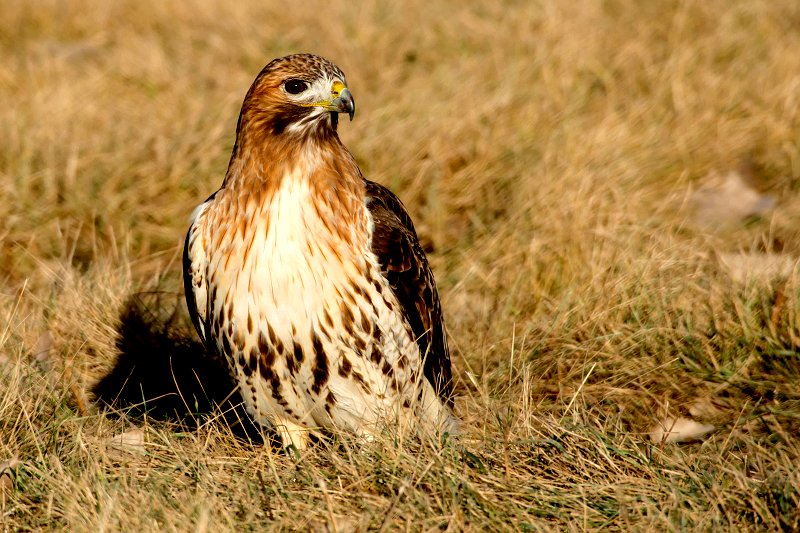
How to protect chickens from hawks is something every chicken owner should keep top of mind, especially if your flock free ranges. Predators are an ever-present threat to every poultry owner. We worry about raccoons and opossums climbing walls and fences to get to our birds, snakes and squirrels stealing eggs, foxes and coyotes carrying off our hens. We focus so much attention on these creeping, crawling, slinking, running creatures that often we overlook the dangers that literally overlook us: aerial predators.
One huge group of aerial predators—owls—are mostly nocturnal and hunt when our birds are usually locked in their coops for the night (although some chicken keepers have reported having to chase owls away in the day). Hawks, though, prowl predominantly during daylight hours. With more than 15 species of hawk in North America, poultry keepers are bound to have at least one as a neighbor. Knowing how to protect chickens from hawks can ensure your birds don’t become fast food for these unwanted drop-in guests by following these suggestions to protect your flocks from hawks.
1. Round Up Your Roamers
Free-range birds might have the world at their feet, but these chickens are the ones most easily targeted by hawks. Shelter and safety are difficult to find on the range, while nature provides plenty of places for predators to perch and observe. Protect your chickens by creating an enclosure, or run, connected to their coop. A chicken run provides plenty of room to roam but also keeps chickens safely corralled and closer at hand. Bonus: Collecting eggs is easier because you don’t have to search your entire property. If a permanent run or coop is not possible, consider building a moveable chicken tractor. This keeps your birds in one location but still lets them enjoy your pastureland under protection.
2. Cover Your Runs
Chicken wire is flimsy and so makes a poor fence for a chicken run—ground-based predators can rip right through it—it makes an excellent overhead cover for your birds. The sight of a protective layer between it and your layers is often enough of a deterrent for a hawk, especially if the netting used is orange, which hawks can easily see. Those raptors that attempt to dive through the chicken wire become entangled in it, giving your chickens time to retreat to safety. Any type of netting serves the same protective purpose when covering a run. For maximum protection, make sure the covering is securely fastened.
3. Shine Some Bling
Reflective, mirror-like surfaces have long proven effective in spooking aerial predators. The North American Bluebird Society and the Cornell Lab of Ornithology recommend these to minimize damage by birds, keeping them away from their intended target or from an area they view as easy pickings. Ready-made predator spookers can be found at Amazon and other online sources as well as at wild-bird supply stores, but it just takes materials such as old CDs or DVDs, reflective tape, or long strips of silvery Mylar to create your own. Install these high on your coop or along the top of your run’s fence line to create a shining deterrent to any curious hawks and other predatory birds.
4. Hide the Food
Several species of hawk, including the sharp-skinned hawk and the Cooper’s hawk, target feeders, not for the food offered there but for the birds that congregate to eat. To keep your chooks from getting picked off during the course of dinner, relocate your feeders—and waterers—so that they are inside your coops and not out in the runs. If there is no place inside your henhouse where these can be sanitarily installed, consider building a feeding station in your run. A covered feeding station will keep your birds safe while they eat and also provide a place for them to hide should a hawk pass overhead.
5. Bring in the Boys
The traditional role of a rooster, other than to help create chicks, is to protect his flock of hens. At the first sign of danger, a rooster will call out to his girls, sending them scurrying to safety while he stands guard against the threat, real or perceived. At times I’ve looked out the window and seen a half-dozen roosters, standing stock still in front of their coops’ pop doors, their heads craned skyward—and not one hen in sight. Usually a turkey vulture has been the source of alarm, but once a red-tailed hawk perched on top of our Orpington coop. The cacophony that this intrusion caused could have woken the dead. By the time Jae and I raced outside, the hawk had already taken off, undoubtedly quite displeased by the din.
Not every city, town or homeowners association allows for roosters, so check your local bylaws and ordinances before adding a rooster to your flock. Allow for a 30-day quarantine away from your girls to ensure everyone remains healthy.
As much a nuisance as hawks are to poultry keepers, it is crucial to remember that they are protected by federal law. The Migratory Bird Act prohibits anyone—even a chicken owner whose flock has been decimated by these raptors—from injuring or killing hawks or otherwise causing then harm. If you’ve taken the measures suggested here without positive results, contact your local U.S. Fish and Wildlife Service office or your state’s department of agriculture to seek help in resolving your hawk situation.
This story about how to protect chickens from hawks was written for Chickens magazine. Click here to subscribe.




